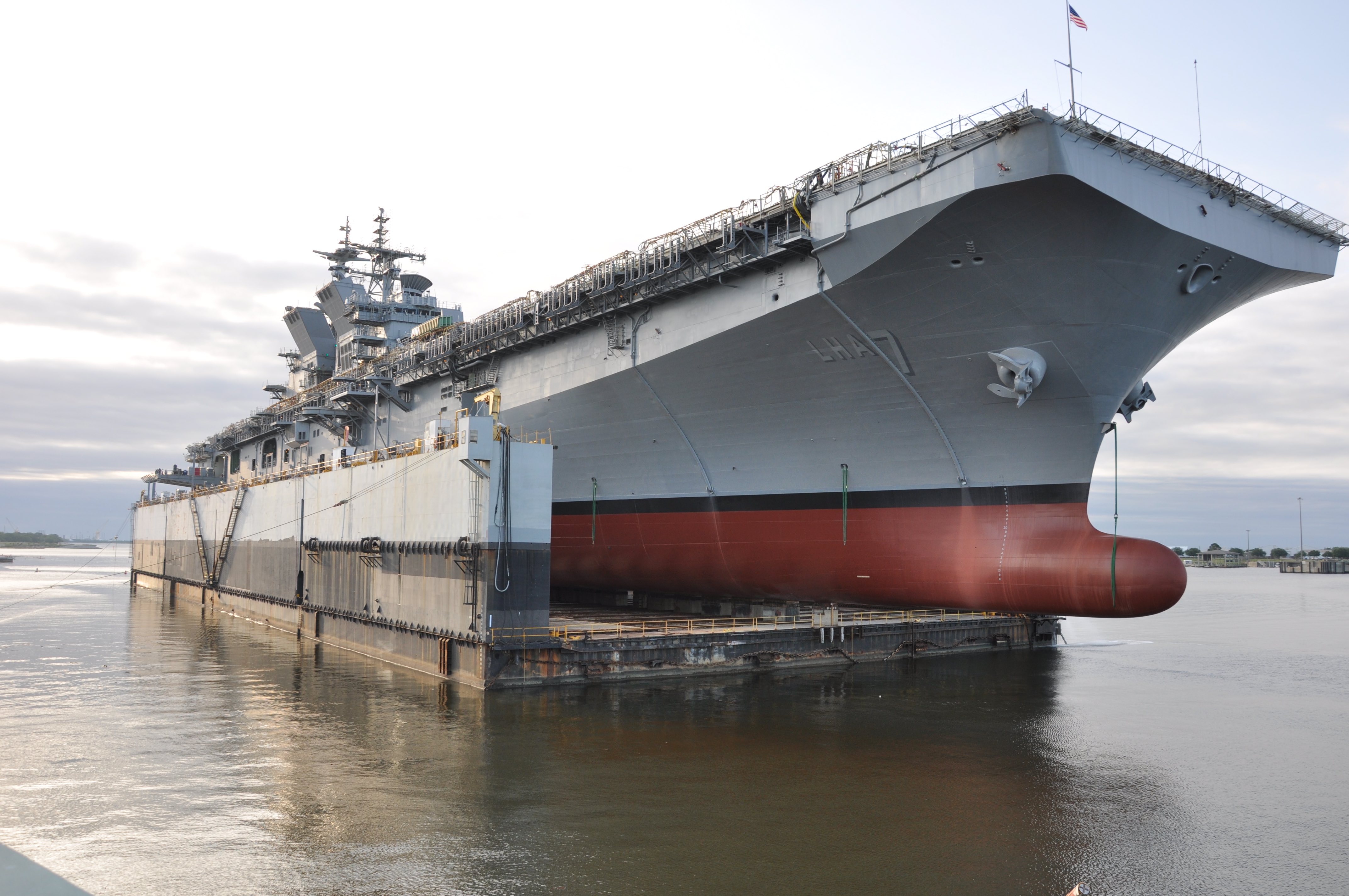
This post has been updated to include information from a Feb. 10 budget briefing with Rear Adm. Randy Crites, the deputy assistant secretary of the Navy for budget.
The proposed Navy shipbuilding plan that cuts a Virginia-class submarine, a frigate and an oiler that were previously planned for FY 2021 received immediate bipartisan pushback from the House and the Senate.
The new shipbuilding plan runs contrary to the service’s previously stated needs and in contrast to new legislation in the Senate pushing for stability in shipbuilding for the defense industrial base. Deputy Assistant Secretary of the Navy for Budget Rear Adm. Randy Crites, who briefed reporters this afternoon, said the Navy’s budget request was the best it could manage given flat toplines and no relief from the Department of Defense to pay for the national strategic asset Columbia-class ballistic missile submarine.
“We have a flat topline and we’re trying to fund Columbia class, which is our highest priority. Columbia is going to result in consuming over 20 of our SCN (shipbuilding) account as we get towards the end of the [five-year Future Years Defense Program], and as we get to serial production (in 2026) it will be over 30 percent. So I think that’s part of the issue, trying to address that inside of the Navy budget,” Crites said when asked about shipbuilding cuts throughout the FYDP.
“It’s what we can afford. We can’t hollow out the force, we have to continue with the vector we’re on to recover our readiness. … At the end of the day, with a flat topline that’s not even keeping up with inflation, and much more complex ships that we’re bringing on – they’re more expensive and they’re more expensive to maintain … capable capacity … is what we’re going to be able to afford.”
When Congress created the National Sea-Based Deterrence Fund (NSBDF), it was meant to fund the Columbia program outside the shipbuilding account, along with providing acquisition authorities to keep costs down and keep the program from seeing delays. Crites said that, contrary to lawmakers’ intent, Columbia is funded “inside the SCN account, that’s inside the Navy’s topline, and then we’ll do an internal reprogramming to the NSBDF, National Sea-Based Deterrence Fund, and we’ll execute using the authorities of the National Sea-Based Deterrence Fund – that’s how we execute the ship. But the ship’s funded inside the SCN account as we send this bill forward.”
Defense Secretary Mark Esper told Defense News over the weekend that he wouldn’t help the Navy pay this every-other-generation bill.
“Clearly the Columbia is a big bill, but it’s a big bill we have to pay,” Esper said. “That’s the Navy’s bill. The Air Force has a bill called bombers and ground-based strategic deterrent, so that’s a bill they have to pay.”
Ship Procurement Cuts
All three ships cut from the FY 2021 budget plan are part of serial production programs that depend on maintaining steady production lines, the Navy said. The Virginia attack boat is part of a multi-year procurement contract, and the Senate legislation calls for the Navy to sign MYP contracts for the other two in a bid to keep costs down and keep industry healthy.
Crites told USNI News during the budget briefing that many of the cuts in 2021 and over the FYDP were strictly due to the Navy not getting enough money in its topline allocation.
“Our shipbuilding account is decreased from $24 billion, which was a 20-year high in SCN last year, to $20 billion in FY 21. In balancing the resources and requirements, we carefully weighed the effects of the programmatic decisions on the industrial base to ensure that our nation maintains the skill and capabilities and capacity critical to meeting our needs of our National Defense Strategy,” he said.
The long-range shipbuilding plan the Navy released a year ago called for the oiler program to oscillate between one and two hulls a year for the next several years. In today’s release of the FY 2021 request, the Navy will not buy any oilers in 2021 or 2022, resuming with one ship in 2023 and two in 2024. It is unclear what a two-year break in production would mean for General Dynamics NASSCO, who won a contract in June 2016 to build the first six John Lewis-class fleet oilers (T-AO-205).
Crites told USNI News that a shipyard accident at NASSCO in July 2018 created a backlog of work at the yard that affects the first two oilers already on contract and two other Navy ships that NASSCO builds. Given those delays, “we don’t believe we’ll be able to start construction on the [oiler] that they currently have on contract until FY 22, so from that standpoint we think we’re okay” in cutting the 2021 ship. “We want to get it in there, we’ll look at it again” during 2022 budget negotiations, he added.
The Navy will buy its first guided-missile frigate by the end of this current fiscal year, with the competition ongoing and a winner being picked as early as this summer, competitors have told USNI News. The program was supposed to begin two-a-year production starting in 2021, a production rate that was laid out in the request for proposals to industry. The FY 2021 request released today would buy just one ship a year in 2021 and 2022, buy two a year in 2023 and 2024, and then jump to three a year in 2025 – something that would likely require the Navy adding a second shipbuilding to the program.
Crites told USNI News that the slowdown in the procurement plan was related to risk management rather than topline challenges.
“We don’t want to have a repeat of some of the lessons learned with [Littoral Combat Ship], where we got going too fast. As it is, we’ll have eight ships in construction before we deliver the first frigate in ’26. So one per year: we’ll award one later this year, we’ll award one next year. Right now we’re planning on one (in 2022), but it’ll get re-looked at in our [2022 budget] build and then we’ll ramp up to two to three.”
On the Virginia SSN program, the spending plan dips down to just one sub in 2021 compared to previous plans that called for two. The Navy signed a contract with builder General Dynamics Electric Boat to cover nine subs from 2019 through 2023, with an option for a 10th boat – which means the Navy could buy just one in 2021 and still remain in compliance with the multiyear procurement contract. However, the service has a shortfall of attack subs, which are an important piece of its force under the National Defense Strategy and based on combatant commander requests for naval forces. Congress also provided enough advance procurement funds in FY 2020 to support two boats in 2021, in a sign of lawmakers’ support for buying as many SSNs as the service can afford and industry can support.
Crites said during his briefing that this cut does ultimately come down to topline constraints.
“This budget request funds a single Virginia submarine. Initially when we built the program, this was done to relieve some pressure, as builder performance had slipped and we were trying to de-risk the first Columbia in that year. The Columbia adds about 164 percent increase in the workload, and we’re also bringing in the Virginia Payload Module as well as acoustic superiority to the Virginia class program. That said, we have seen an increase in our industrial performance and that improved to the point where we believe that it’s more about affordability at this point, and the ability for us to generate $2.9 billion to put the submarine back in in endgame deliberations wasn’t achievable,” the rear admiral said.
Additionally, though the Arleigh Burke guided-missile destroyer program was kept intact at two ships in 2021, the service is proposing cuts later in the five-year Future Years Defense Program (FYDP). The Navy previously planned to buy two in 2022 and then three a year in 2023 and 2024; instead, today’s release proposes just one in 2023 and then two in 2024. This reduction is in line with plans that call for less dependence on large combatants and more investment in small combatants to create a larger and more distributable force in the future. However, it’s unclear what this plan means for the future of the production lines at Ingalls Shipbuilding in Mississippi and at General Dynamics Bath Iron Works in Maine, and for the transition from the Arleigh Burke DDGs to an eventual future large surface combatant. Crites said the cuts come down to “strictly affordability” concerns.
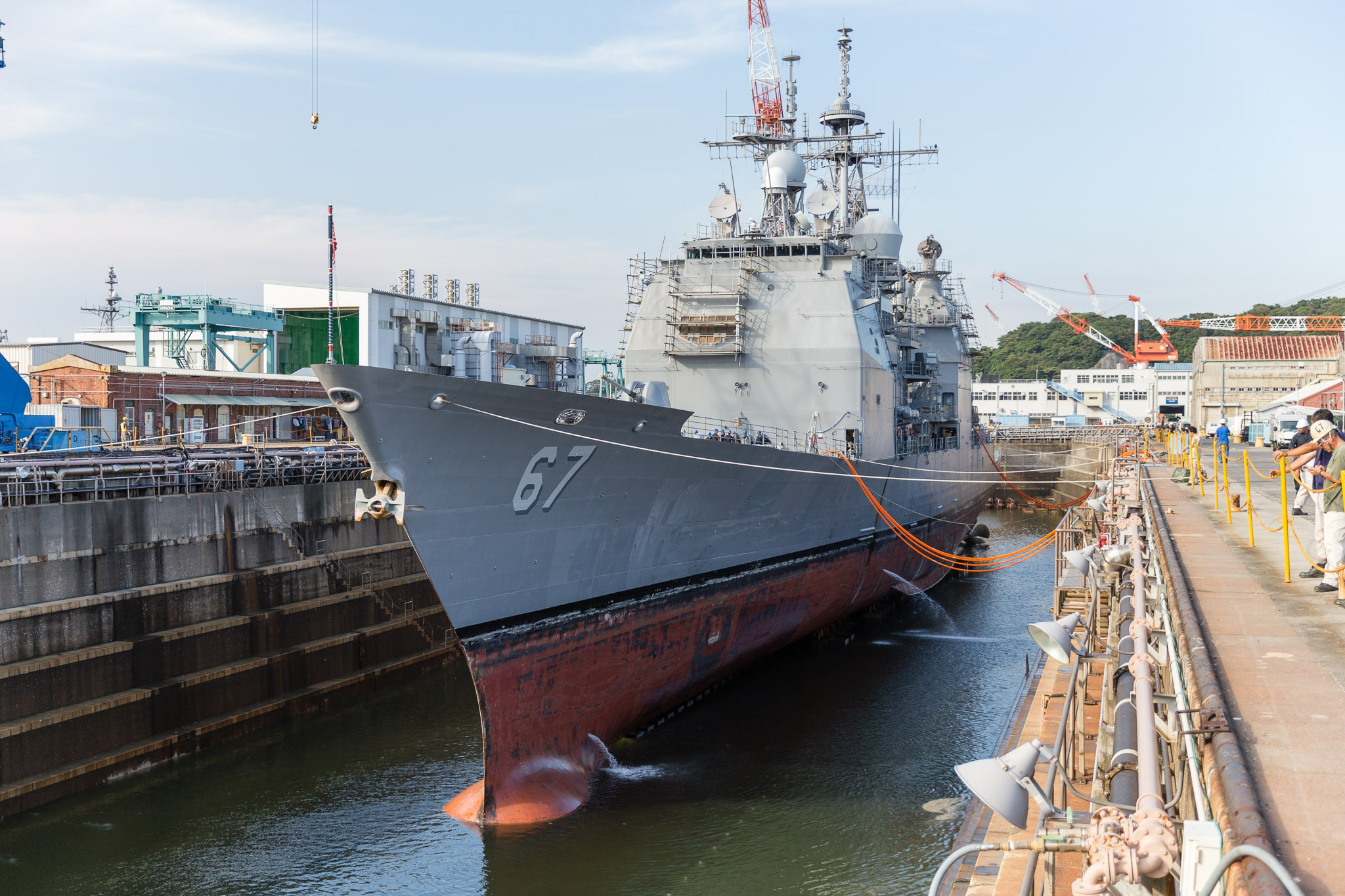
Early Ship Decommissionings
In addition to the cuts to new ship construction, the service also laid out plans to retire several ships early.
Four Ticonderoga-class cruisers – USS Monterey (CG-61), USS Shiloh (CG-67), USS Vella Gulf (CG-72) and USS Port Royal (CG-73) – would see accelerated decommissioning timelines.
“This decision was made as part of a divestment of our least capable legacy platforms,” Navy budget documents say about these four ballistic missile defense cruisers.
“In this case, these cruises have not been through CG Modernization program and, as Ballistic Missile Defense ships, these ships are our least capable Aegis baseline in the high-end fight. These four ships decommission at an average age of over 20 years of service life. We avoid the cost of maintaining this unique combat systems/software baseline. These ships are not part of the 2-4-6 modernization and would not be candidates to serve the role of Air Defense Commander in a Carrier Strike Group. The Navy is committed to maintaining those cruisers for that vital role. But we have more capable BMD platforms, including all of our new destroyers.”
The Navy has tried repeatedly over the years to retire cruisers early instead of putting them through the 2-4-6 plan that calls for two destroyers a year to go into an upgrade that lasts no longer than four years, with no more than six tied up in the modernization program at any given time.
Crites said during the briefing that these four cruisers hadn’t been updated to the most recent Baseline 9 Aegis Combat System, couldn’t conduct air defense missions like their upgraded counterparts, and could be replaced in some missions by the newest Flight III Arleigh Burke-class destroyers. Three of the cruisers would be decommissioned in 2022 and one would be later, meaning the decision could be reversed later if the Navy found money in the budget to keep them around.
“This is a return on investment situation; we’re looking at how much money it’s going to cost to upgrade these ships when we already meet our [ballistic missile defense] requirement, we’re bringing on the Flight III DDGs that could act as the air defense commander,” he said.
“Again, as we look to build a larger navy, this is one of the levers we could pull, would be to keep some of these ships longer. But those ships will all be over 30 years at the time we do this.”
The four oldest Littoral Combat Ships would also be decommissioned in this plan. USS Freedom (LCS-1), USS Independence (LCS-2), USS Fort Worth (LCS-3) and USS Coronado (LCS-4) currently operate out of San Diego, Calif., and are responsible for testing remaining mission package technologies and working integration between the LCS hulls and other communities such as explosive ordnance disposal units (EOD). They were built before the two builders, Lockheed Martin and Austal USA, moved to serial production and made tweaks in the design of the ship. The Navy made clear in a 2017 LCS reorganization that these ships wouldn’t deploy overseas to contested areas such as the Western Pacific or the Middle East, but the ships could have served other roles such as supporting U.S. 4th Fleet and U.S. Southern Command, which routinely request more ships to transport U.S. Coast Guard law enforcement detachments.
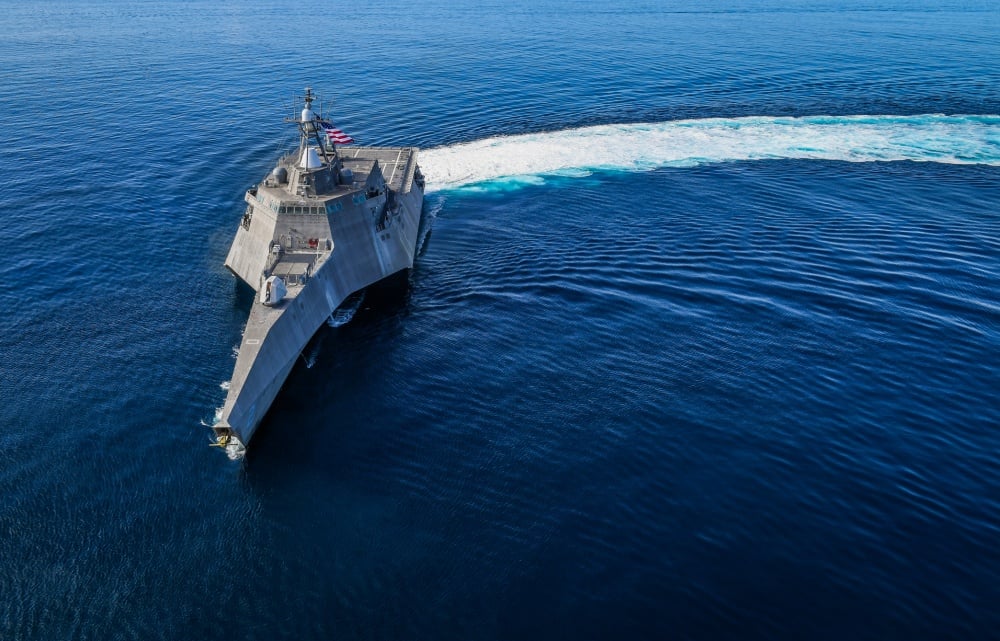
Crites acknowledged that these LCS hulls would need significant upgrades before being deployed to contested environments, and “when we looked at the return on investment, the cost associated with bringing those ships up – they’re not unimportant, just in great power competition they were less important – so that’s why we took those savings and applied it to other areas.”
By retiring these ships early, the Navy anticipates saving about $1.2 billion over the FYDP that it would otherwise spend on ship maintenance and modernization efforts, as well as additional money from not having to create as many LCS Maintenance Execution Teams to supplement the crew’s ability to do ship maintenance at the pier.
The service also plans to decommission three Whidbey Island-class dock landing ships early: USS Germantown (LSD-42), USS Fort McHenry (LSD-43) and USS Gunston Hall (LSD-44), though the documents don’t provide timelines for the accelerated decommissionings. “All of these ships are more than 30 years old today. The LPD Flight II will start delivery in FY 2025 with a more capable combat system, radar, and communications and will be CMV-22 capable. The amphibious ship inventory relative to the requirement is healthier than the other ship classes,” reads the budget documents. Though the Navy will be short on amphibs compared to previous requirements, the Marine Corps has been talking about a new class of smaller amphibious ships it wants to invest in that could supplement the traditional LSDs, amphibious transport docks (LPDs) and amphibious assault ships (LHA/LHDs). Other classes, such as attack submarines and small combatants, are significantly below the desired numbers under the last force structure assessment in 2016 and the expected results of the ongoing FSA to be released later this year.
All told, decommissioning these ships early would totally offset other growth in the fleet due to new ships delivering. The Navy has 294 ships today and expects to have 306 by the end of FY 2021. Crites said that, if this entire five-year plan were executed exactly as laid out in today’s budget documents, the service would have just 305 ships by the end of FY 2025, or the end of the FYDP.
“355 is the law of the land, and there are a number of different actions we could take as we look to the future on how we might achieve a higher number,” he said, all of which require higher funding levels for the sea service.
Congressional Reaction
Between the cuts in shipbuilding and the accelerated divestment of existing ships, lawmakers are already rejecting this plan.
“The President’s shipbuilding budget is not a 355-ship Navy budget. As Chair of the Seapower Subcommittee, I can say with complete certainty that, like so much of the rest of the President’s budget, it is dead on arrival,” House Armed Services Committee member Rep. Joe Courtney (D-Conn.) said in a statement.
“This weak, pathetic request for eight ships – of which two are tugboats – is not only fewer ships than 2020, but fewer ships than the Navy told us last year it planned for 2021. At $19.9 billion, this request is nearly 17 percent lower than current funding levels and truthfully proposes just six combatant vessels – the lowest level in a decade. It’s impossible to square this plan with the Administration’s National Defense Strategy and its claim that it supports a 355-ship fleet.
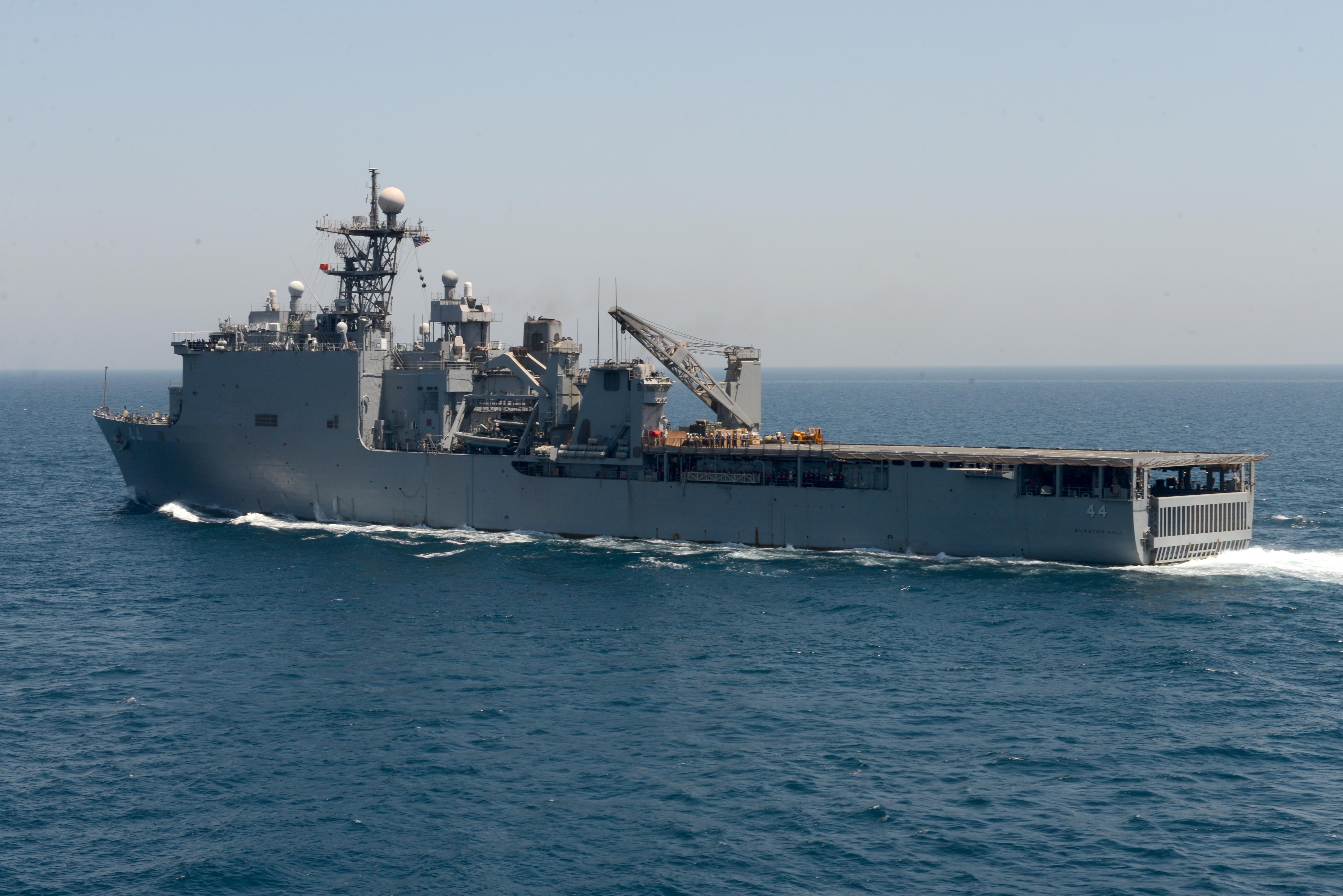
Courtney went on to say that the shipbuilding budget had been raided to fund other spending priorities coming out of the Office of Management and Budget and added that “growing the fleet – and funding the investments necessary – is either a priority for the Administration or it’s not. Unfortunately, the Defense Department leadership was unable to withstand the pressure to use the shipbuilding account as a piggy bank, even as Navy leaders have been outspoken in their concern about getting the support they need to fund our shipbuilding priorities.”
On the Virginia sub that was cut, which is built in Courtney’s district in Connecticut, the lawmaker said, “year after year, Congress has heard from Navy leaders, combatant commanders and experts about the growing demand for submarine capabilities as countries like China and Russia step up their undersea activity. They have urgently warned us that we need more submarine construction, not less, in order to mitigate the nearly 20 percent reduction in the fleet we presently face within this decade. That’s why we worked so hard to achieve and sustain the two a year build rate since 2011. Deviating from that plan now makes no sense, and I am confident we will address this incoherent decision in the 2021 defense bill.”
Rep. Rob Wittman (R-Va.), the ranking member on the seapower subcommittee, said in a statement that, “simply put, the budget published today does not invest nearly enough in shipbuilding. It is clear to me—and it should be clear to everyone at this point—that we are in a full-scale strategic competition. And, while China is on track to reach a 420-ship Navy by 2035, we are struggling to stay on track with our 355-ship Navy shipbuilding plan. We must note that the $128 billion Columbia-program will be dominating the shipbuilding accounts in the coming years, edging out new projects. A decrease in the shipbuilding account is the opposite direction we need to be going if we are to compete. I will be working in this year’s NDAA to get this number back where it needs to be to continue to build and maintain our Fleet; I won’t allow us to lose ground.”
On the other side of Capitol Hill, Sen. Roger Wicker (R-Miss.), who sits on the Senate Armed Services Committee and previously headed the seapower subcommittee, also rejected the spending plan.
“The Department of Defense budget request makes it clear that the current budget agreement is insufficient to ensure that our military can implement the National Defense Strategy and make the investments it needs to outpace our adversaries,” Wicker said.
“I am especially concerned that the budget proposal released today does not provide adequate funding to the Navy for shipbuilding, which is necessary to reach our statutory national policy of 355 ships and ensure that our fleet remains unrivaled at sea.”
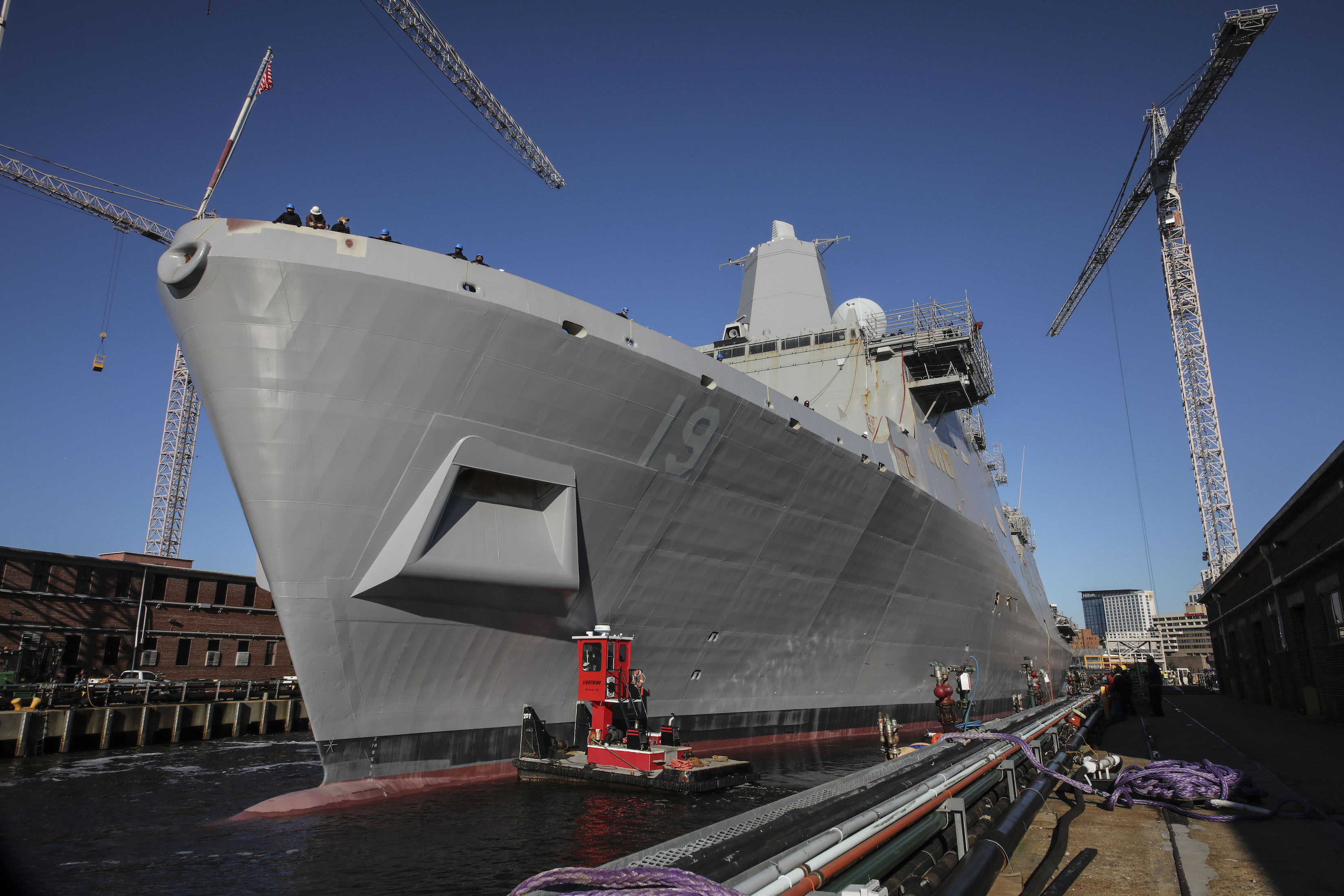
“Specifically, this budget proposes to procure 44 new warships in fiscal years 2021 through 2025, which is 10 ships fewer than planned over the same timeframe in last year’s request,” Wicker continued.
“Congress and the administration should come together to fund the defense department at a responsible level, which senior defense leaders have said is 3 to 5 percent above inflation annually. As the defense appropriations process progresses, I will take every opportunity to ensure our military service members across the Armed Forces receive the tools, equipment, training, and innovation they need to keep us safe.”
Last week, Wicker released legislation that would reject much of the Navy’s cuts and calls for multiyear procurement contracts for amphibious ships, frigates and oilers to protect the industrial base from massive swings in the annual shipbuilding plan, such as those seen this year.





